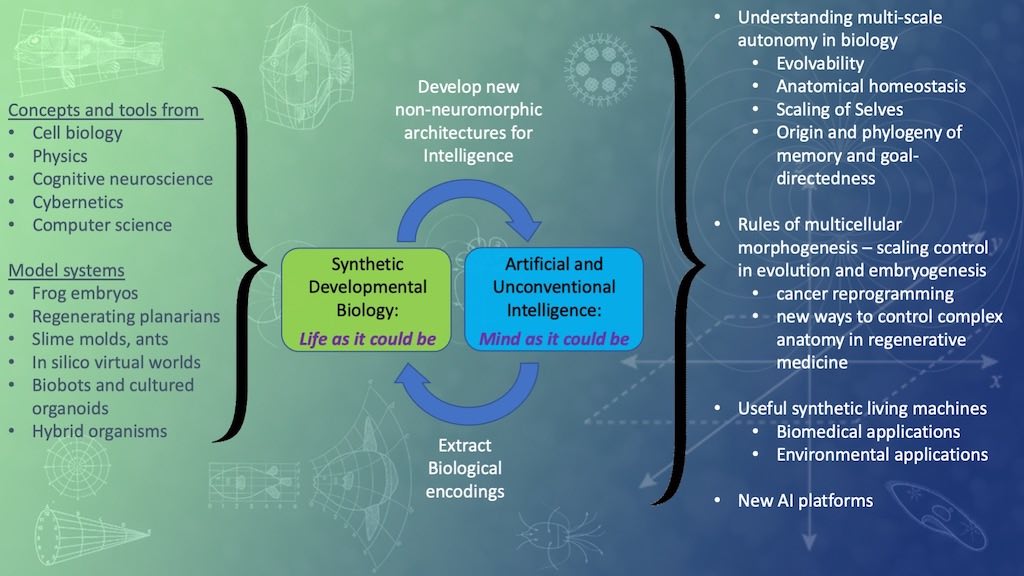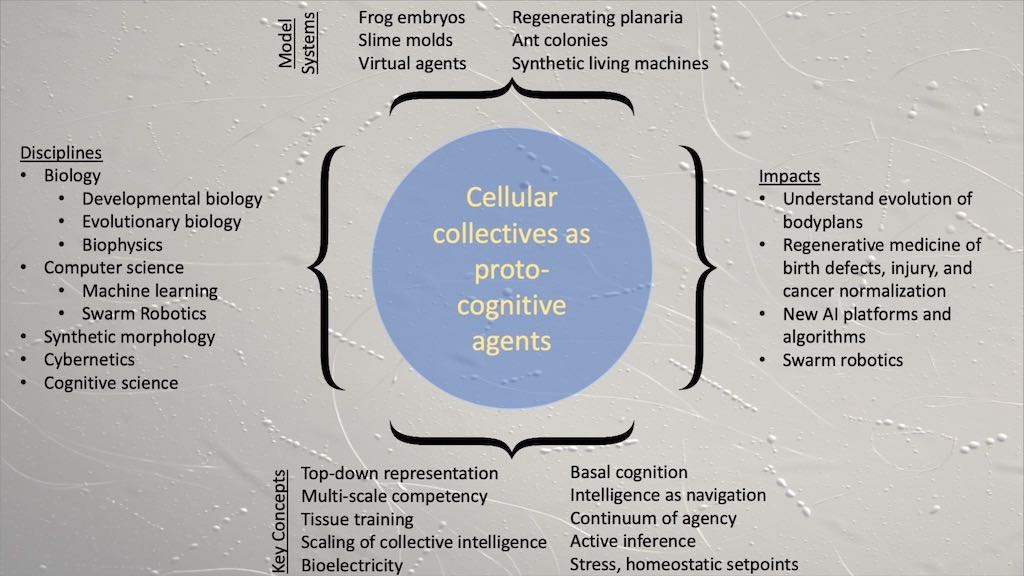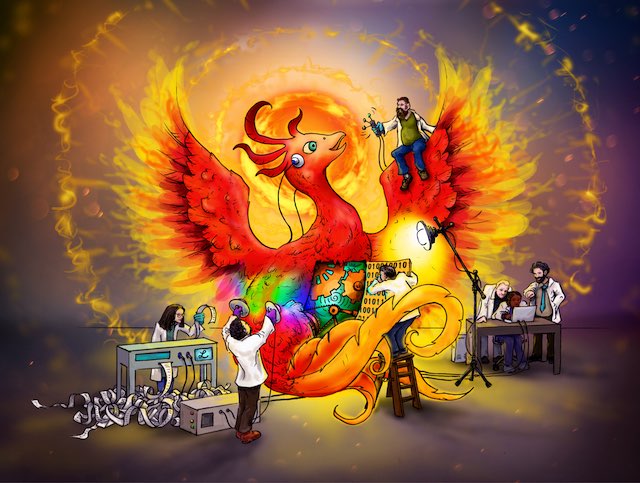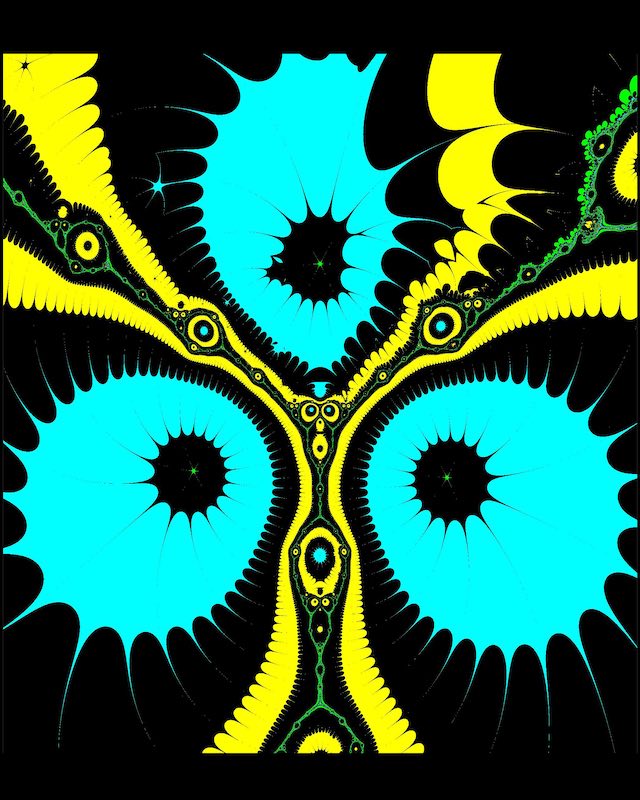Research
Mind Maps
The many diverse projects in our lab are all part of one interdisciplinary effort. Mindmaps are a useful tool to help visualize the relationships between the various ideas, concepts, projects, and outcomes. Here are a few specific mindmaps that encapsulate the semantic relationships in our work:


The development of the conceptual framework related to diverse intelligence and basal cognition can be tracked through publications as follows:



"The law of the least action ... is a universal principle from which all other principles naturally flow"
— Pierre de Maupertuis, 1750"
"The very same forces that "member" us, that place our heart and lungs and liver in relation to one another, that "organ"ize us into a decidedly human form, are now released to re-member, and to "organize" our life of memory."
—Eugene Schwartz, quoting Rudolf Steiner
"The living organism represents, or occupies, a field of force which is never simple, and which as a rule is of immense
complexity."
—D'Arcy Thompson (1917)
"Possibly the people who are trying to discover how to set up a computer to learn to play good chess, or bridge, are among
those most likely to make a major contribution to the fundamental theory of evolution."
—Conrad Waddington (1968)






